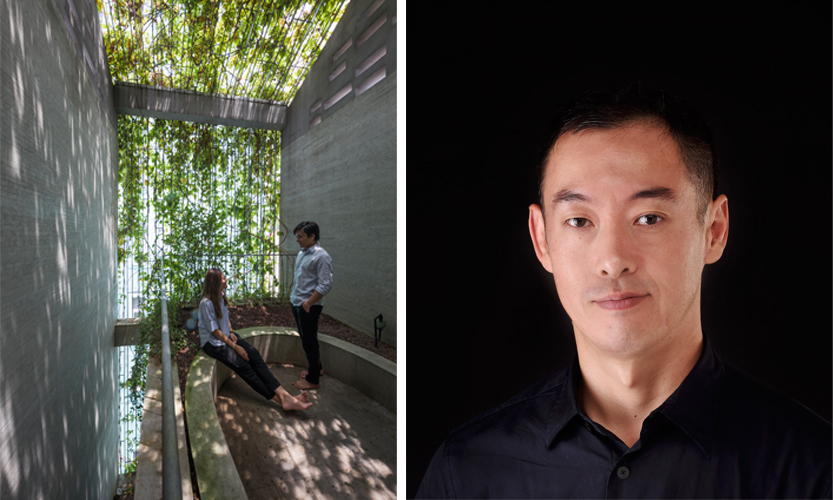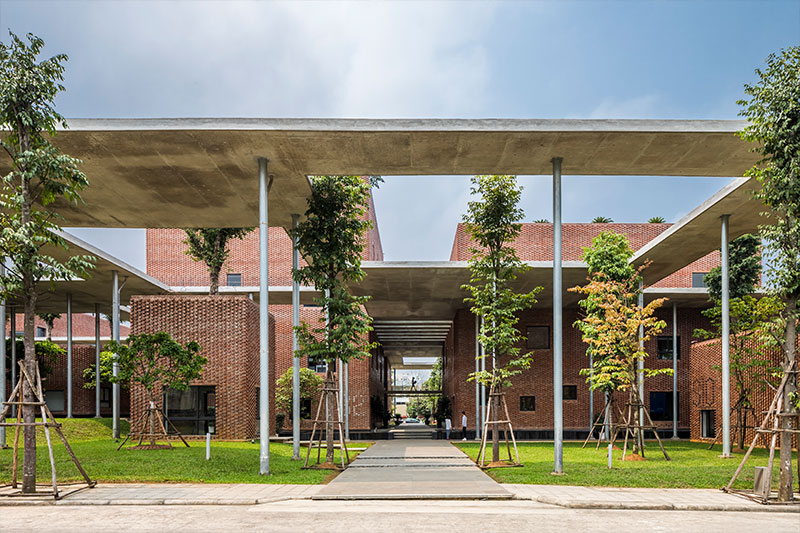In the booming metropolises of Vietnam, one award-winning architecture firm, VTN Architects, is striving to breathe green spaces and sustainable credentials into some of the fastest-growing cities in the world.
Fueled by an economy that’s seen its GDP increase from USD 6 billion to a figure now surpassing USD 225 billion in the last 30 years, Vietnam is a country seeing growth everywhere – not least in the skyline of its cities. One architecture firm, however, wants to reshape what that development looks like, reimagining a future for urban Asian design as they go. Founded by Vietnamese architect Vo Trong Nghia, VTN Architects has made a name for itself as a leading light in sustainable design with projects across Vietnam and beyond, winning multiple awards along the way. Just this year they took home three Good Design Awards from the European Centre for Architecture, Art Design and Urban Studies for their work. One of their partners, Yasuhiro Mutsuno, argues the case for a radical rethink of the building boom sweeping across Vietnam.

Hailing from Japan, Yasuhiro was headhunted by the firm’s founder all the way from Saigon. “I’ve been acquainted with Vo Trong Nghia since we were in college. He asked me to work with him for a long time, but I was in charge of some big projects back in Japan and I couldn’t join until they were completed.” Once they were done, Yasuhiro made the leap, seeing a huge opportunity in the booming metropolis of Ho Chi Minh City. “I was convinced that Vietnam was in a growing stage just like Japan had been in the 1970s. I never doubted that there were going to be opportunities to make wonderful architectural pieces.” And, beyond their impressive (not to mention awe-inspiring) designs, what attracted him to VTN Architects was their green approach. “The theme of VTN is connecting humans with nature. In Vietnam, there’s an increasing number of buildings designed solely on economic principles. They are far too myopic-thinking,” explains Yasuhiro.
You might also like Glowpear: Mobile Gardens for Concrete Jungles

Take some of the firm’s most well-known projects and it’s obvious where their intentions lie. Their aptly named ‘Breathing House’ in the heart of hectic Saigon is tucked away on a small plot surrounded by buildings on every side, yet the firm has created an ode to greenery and minimalism within its narrow walls. Designed for a single family, the facade of the long, thin, five-floor building looks like a lush, green waterfall, whilst the interiors incorporate clean, concrete walls surrounding open spaces and voids, all encased within a veil of creeping greenery that breathes fresh air and a peaceful atmosphere into every crevice of the house. “Our designs don’t have fancy decorations. Instead, we actively use local materials and place greenery appropriately,” says Yasuhiro. This theme of using plants as an integral part of their designs is a hallmark of the firm’s work. Another project, Stepping Park House, has been created to bring green spaces back into the community with a facade that’s equal parts plants and walls, whilst their facade for a building at Hanoi’s FPT University in the heart of Vietnam’s tech hub Hoa Lac Hi-tech Park is a chequerboard of white and green. “We want to convey the potential of the land. When the greenery grows and the site changes, the individuality of each project becomes more visible,” says Yushiro. And, thanks to its weather conditions, Vietnam is the perfect place for green architecture such as theirs. “The growth of plants is great, while the maintenance is even easier because there isn’t much of a winter here. If you use the plants effectively and incorporate winds well for ventilation, you will end up with reduced energy consumption.”

In addition to greenery, bamboo is another staple in VTN Architect’s language of design, having been described by its founder as “the green steel of the 21st Century.” Citing its sustainable credentials as well as their commitment to creating cost-effective spaces where people feel more connected to nature, they have used it to build everything from beach huts on a castaway resort off the north coast of Vietnam to a swirling, cave-like roof in Vinh and a pavilion at Sydney’s SCAF Gallery.
It’s all part of a quest to radically review the way the region is approaching urban development. “We feel that each Asian city is becoming more architecturally uniform. The character of the city is being lost and we need to pay more attention to each city’s attractions,” says Yushiro. “We hope that our Vietnamese architecture will take root in culture and make each city more attractive.” And, above all, they hope to breathe new life, green spaces and a sense of calm into cities that are in desperate need of these elements. “We are reorganising building design with components of the land and we believe it could set a new sustainable Vietnamese design trend. We just have to take care that the greenery isn’t just a passing fashion.”
Related Articles
MyDoc: Solving Asia’s Healthcare Crisis With Technology?





